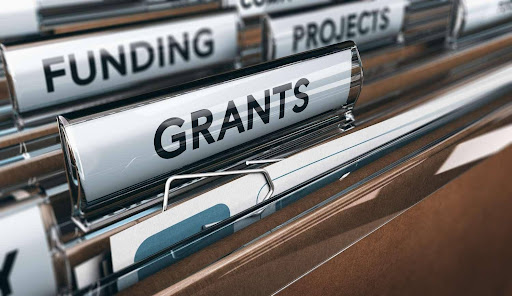How to Apply for Government Grants: A Step-by-Step Guide to Unlocking Opportunities
If you’ve got big ambitions or dreams waiting to be realized, don’t let a lack of funding hold you back. For individuals, businesses, and organizations alike, government grants are one of the best-kept secrets to turning ideas into reality. These financial awards can be a game-changer, opening doors to opportunities that might otherwise seem out of reach. But navigating the ins and outs of grants might feel overwhelming.
Thankfully, with a little guidance and preparation, the process becomes far less intimidating. This article is here to demystify government grants and give you the tools you need to identify the right opportunities, craft a compelling application, and manage your grants like a pro. Let’s break down everything you need to know to turn that opportunity into a winning outcome.
What Are Government Grants?
Government grants are financial awards provided by federal, state, or local governments to individuals, organizations, or businesses to fund specific projects or initiatives. Unlike loans, grants do not have to be repaid, making them an attractive funding source. These government grants aim to support activities that benefit the public, such as education, scientific research, small business development, community programs, and more.
Grants are often highly competitive and come with stringent eligibility criteria. Each grant is designed with specific goals, which means applicants must align their projects with the grant’s purpose to stand a chance of receiving funding.
How Do Government Grants Work?
Government grants are funded through taxpayer money, and their distribution is carefully regulated. Here’s how they generally operate:
- Grant Programs Are Established: Governments set aside funds for specific purposes, such as improving healthcare access, fostering small business innovation, or supporting environmental conservation.
- Grant Announcements Are Made: Government agencies release notices about available grants through platforms like Grants.gov or local government websites. These announcements include eligibility criteria, application instructions, deadlines, and funding details.
- Applications Are Evaluated: Submitted applications go through a rigorous review process where they are assessed for merit, feasibility, and alignment with the grant’s goals.
- Funds Are Awarded: Successful applicants receive funding to carry out their projects, usually under specific terms and conditions.
- Compliance Is Monitored: Recipients must provide regular updates, financial reports, or project outcomes to ensure the funds are used appropriately.
Applying for Government Grants
The application process may seem overwhelming but breaking it down into clear steps makes it manageable. Follow these steps to improve your chances of success:
1. Identify the Right Grant for Your Needs
Start by determining your funding goals. Make a list of all the objectives you seek to achieve with the funding. Once you’re clear on your goals, research grants that align with your needs.
Some helpful resources include:
- Grants.gov: A comprehensive database for federal grants.
- State and Local Government Websites: Many states and cities offer grants tailored to regional priorities.
- Small Business Administration (SBA): Offers grants and resources for small businesses.
- Foundation Centers: Provide information on grants for nonprofits and community projects.
2. Check Eligibility Requirements
Each grant has specific eligibility criteria. Carefully review the guidelines to ensure you qualify before investing time in the application process. Typical requirements might include:
- Type of applicant (individual, nonprofit, business, etc.)
- Geographic location
- Project focus or industry
3. Understand the Application Guidelines
Grant applications usually require detailed proposals, budgets, and supporting documents. Download and carefully read the Request for Proposals (RFP) or Notice of Funding Opportunity (NOFO). Pay close attention to:
- Deadlines
- Required Documentation
- Evaluation criteria
4. Prepare Your Application Materials
A strong application is thorough, well-organized, and tailored to the grant’s objectives. Key components often include:
- Cover Letter: Briefly introduce yourself or your organization and explain why your project is a good fit for the grant.
- Grant Proposal: Provide a detailed description of your project, goals, timeline, and how it aligns with the grant’s purpose.
- Budget Plan: Clearly outline how the grant funds will be used.
- Supporting Documents: Include relevant data, letters of support, tax documents, or organizational credentials.
5. Submit the Application
Double-check that all required materials are included and formatted correctly. Most federal grants require online submissions through platforms like Grants.gov, while others may accept email or paper submissions. Be sure to meet the deadline—late applications are typically not considered.
6. Follow Up
After submitting your application, you may receive confirmation of receipt. Some agencies allow you to track the status of your application. If you don’t receive updates within the stated timeframe, consider contacting the grant administrator for clarification.
Receiving Government Grants
Congratulations! If you’ve been awarded a grant, here’s what comes next:
1. Review the Grant Agreement
Carefully review the terms and conditions outlined in the award agreement. Ensure you understand the reporting requirements, deadlines, and allowable uses of funds.
2. Set Up Financial Systems
Since grant funds are subject to auditing, it’s essential to establish a clear system for tracking expenses. Keep detailed records of how the money is spent and store receipts and invoices securely.
3. Implement Your Project
Execute your project as outlined in your grant proposal. Stay on track with your timeline and deliverables, as failing to meet commitments could jeopardize future funding opportunities.
4. Report Progress
Most grants require periodic progress reports or financial statements to demonstrate accountability. Be timely and transparent with these submissions.
5. Complete Final Reporting
Once your project is complete, submit a final report detailing how the funds were used and the outcomes achieved. This demonstrates your ability to manage grants responsibly and can enhance your reputation for future applications.
Conclusion
Applying for government grants is a worthwhile endeavor that can unlock significant funding opportunities for individuals, businesses, and organizations. While the process may seem complex, breaking it down into manageable steps and following the tips outlined in this guide will set you on the path to success. Remember, government grants are highly competitive, so persistence, preparation, and attention to detail are key.
Whether you’re a budding entrepreneur, a nonprofit leader, or a researcher with big ideas, the right grant could provide the boost you need to bring your vision to life. So roll up your sleeves, dive into the world of grants, and get ready to make a meaningful impact!
Stay tuned with VerifiedZine!






